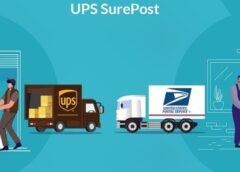Last September 11, the Postal Service issued an Industry Alert announcing that it would end or revise its negotiated service agreements with package consolidators, notably ending discounts for destination entry of parcels. In the press release notifying the public, Postmaster General Louis DeJoy was quoted as stating:
“… to more effectively utilize our network and realize enhanced economies, we no longer intend to provide discounted rates through NSAs that incent parties to aggregate mail volume from multiple shippers and to bring such volume directly to our delivery units. … It’s challenging for us to justify entering into NSAs that incentivize bypassing our transportation and processing network, while leaving us responsible for managing the final mile.”
The PR-speak-laden announcement failed to explain why it wasn’t advantageous for the Postal Service to have another company bring it volume that it only had to deliver – while charging rates that more than covered the related costs.
However, based on recent reports about United Parcel Service – that had an NSA for its SurePost service – the ending of the agreement may not have happened quite as DeJoy sought to characterize it. According to SupplyChainDive, United Parcel Service broke its SurePost agreement with the Postal Service over service concerns, despite the possibility of losing customers. The company’s CFO
“… acknowledged that the delivery insourcing and rate increases could lead to customer churn. ‘There are some customers that this might not work for, and we’ve taken that into account in our forecast.’ … Despite the risk of losing business, UPS executives said the move will ensure SurePost packages are delivered with strong service without impacting the company’s financial performance.”
The article added that
“UPS was worried about ‘service deterioration’ for SurePost packages delivered by the Postal Service due to changes incentivizing the drop off of packages further upstream in the agency’s network. … ‘That value proposition of an increased cost as well as deteriorating service, that didn’t work for us,’ UPS’ CEO said.”
Separately, a January 31 Bloomberg article said UPS was scaling back delivering shipments for Amazon “by 50%” so that it could “focus on more profitable clients.” UPS’ CEO added that “they are our largest customer, but they are not our most profitable customer.” The article added
“The catalyst for UPS came in recent weeks with a little-seen fee change by the US Postal Service. …
“While big couriers such as UPS specialize in express shipments, they have relied on the post office for last-mile delivery of budget-priced parcels, especially to far-flung rural locations. In 2024, for instance, a commercial carrier could pay the Postal Service $2.79 to do the final mile of delivery on a 12-ounce package like a golf shirt.
“That model began to crack when the Postal Service hiked fees on UPS beginning Jan. 1, part of a broader push by the agency to stem persistent losses. Suddenly, the same golf shirt package would cost UPS $5.10 to send through letter-carrier routes, an 83% increase … . ‘When you inject big price increases in a marketplace, you open the door to’ change [a consultant] said. …
“Citing the steeper costs, UPS allowed its contract with USPS to lapse as of the end of last year. …”
So, though DeJoy tried to spin the story to make himself look like he was the decision-maker, it appears that it actually was DeJoy’s pricing strategy and his agency’s less-than-satisfactory service that motivated UPS to end the NSA.


